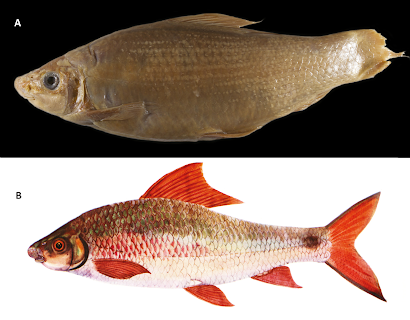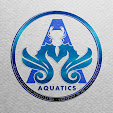
ඇතුලත් වේ. මෙම පරිසර පද්ධති මිරිදිය මත්ස්ය විශේෂ 107 කට සහ වෙනත් ජීවීන් රැසකට වාසස්ථානය සපයයි. ඒ අතර ශ්රී ලංකාවට ආවේණික වන විශේෂ රැසක්ද හදුනාගත හැකිය. වර්ෂාපතන ව්යාප්තියට අනුව වියළි කලාපය, තෙත් කලාපය සහ අතරමැදි කලාපය ලෙස කලාප තුනකට බෙදා වෙන් කල හැකිය. මිරිදිය මසුන්ගේ පැතිරීම එම දේශගුණික කලාප මත රදා පවතී. මත්ස්ය විශේෂ 107 අතුන් විශේෂ බොහෝමයක් තෙත් කලාපයේ ගංගා හා වගුරු ආශ්රිතව වාසය කරයි. පතිරණ සාලයා (Danio pathirana) , බුලත් හපයා (Puntius nigrofasciatus), ඉරි හදයා (Aplochius werneri ) , දන්කොල පෙතියා (Puntius singhala) සහ ලේ තිත්තයා (Puntius titteya ) , තඹලයා (Labio lanka), මගුරා (Clarias brachysona ), ගඩයා ( Labio fishery ), රැවුල් දන්ඩියා (Esomus thermoicos) සහ දුඹුරු පොට්ට ආදා ( Monopterus desilvai )ආවේණික මිරිදිය මත්ස්ය විශේෂ සදහා නිදසුන් වේ.
බුලත් හපයා

Source: https://blogger.googleusercontent.com/img/b/R29vZ2xl/AVvXsEiEcqrDpDxqF7eW79lAj7T4PkPmszcPnfLFPds3d4GJInRUpFNqyuApiBJBPo7ryViCHq8TCQiToYrd0jj7pa0dWNTvZWSholYlZmG-yVXjZ_oc6M5jQFbdbN1vkUSZXL4W_wVMZCHIbkBv/s1600/black_ruby_barb.jpg
විද්යාත්මක නාමය = Puntius nigrofasciatus
ඉංග්රීසි නාමය = black ruby barb
ශ්රී ලංකාවේ පහතරට තෙත් කලාපයේ කැලණි හා නිල්වලා ගංගා නිම්න ආශ්රිතව ද පුත්තලම් දිස්ත්රික්කයේ මා ඔය, කඩුපිටි ඔය හා රතඹලා ඔය ආශ්රිතව ද වාර්තා වී ඇත. රංචු වශයෙන් ඉවුරු ආශ්රිතව දැකිය හැක. පිරිමි මත්ස්යයන් ගැහැනු මත්ස්යයන් ට වඩා වර්ණවත් බවින් වැඩිය. වර්ණවත් රතු පැහැති විනිවිද පෙනෙන වරල් සහ සිරුරේ සිරස් අතට විහිදෙන පැහැදිලි කලු පැහැති පැල්ලම් 03 මගින් බුලත් හපයා පහසුවෙන් වෙන්කර හදුනාගත හැකිවේ. සිරුරේ ප්රමාණය සෙන්ටිමීටර 04-06 ත් අතර වේ. මදුරු කීටයන් , කුඩා ජලජ් සතුන්ගේ හා අනෙකුත් මසුන් ගේ කීටයන් ආහරයට ගන්නා අතර බිජු ලෑම සදහා තෝරා ගන්නේ අදුරු ,ජලජ පැළෑටි සහිත වැලි කැට පිහිටය ස්ථානයකි. තර්ජනයක් ලක් වූ විශේෂයක් ලෙස මේ වන විට වාර්තා වන බුලත් හපයා අපනයනය කිරීම නීතියෙන් තහනම් කොට ඇත.
ඉරි හදයා
විද්යාත්මක නාමය = Aplochius werneri
ඉංග්රීසි නාමය = Werners killifish
පහතරට තෙත් කලාපයේ ගිං ගග, බෙන්තර ගංගා ද්රෝණියේත්, නිල්වලා සහ කළු ගංගාව ආසන්නයේත් , වයඹ පලාතේ මාඔය හා දැදුරු ඔය ජලාශ ආශ්රිතව වාර්තා වී ඇත. සෙවන සහිත සෙමින් ගලා යන මැටි සහිත දිය පහරවල් ආශ්රිතව ද දැකිය හැකිවේ. මදක් ලා කොල පැහැ ගන්නා පෘශ්ඨීය වරල, පෞච්ජ වරල ආසන්නයේ පවතින කළු පැහැති තිත් සහ කෙලවර ලා රත් පැහැ වූ ගුද වරලින් හා පෞච්ජ වරලින් මොවුන් පැහැදිලිව අනෙකුත් විශේෂ වලින් වෙන්කර හදුනාගත හැකිය. සිරුර සෙන්ටිමීටර 08ක් දක්වා වර්ධනය වේ. ප්ලවාංග , කුඩා කීටයන් හා අනෙක් මත්ස්යයන් ගේ බීජාන්තමඩි කීටයන්(yolk- sac larvae ) ආහාරයට ගනී. ජලජ ශාක මත ඇලෙනසුලු බිත්තර දමමින් වර්ගයා බෝ කරන අතර වරකට බිත්තර 80-100 අතර දමනු ලබයි. වර්තමානයේ තර්ජනයට ලක් වූ විශේෂයක් ලෙස නම් කර ඇත.
දන් කොළ පෙතියා

විද්යාත්මක නාමය = Puntius singhala
ඉංග්රීසි නාමය = filamented barb
ලංකාවේ උතුරු පළාතේ හා මධ්යම කදුකරයේ හැර අනෙකුත් ප්රදේශවල වගුරු , වැව්, ඇළ දොළ හා ගංගා ආශ්රිතව වාසය කරයි. දේහය සෙන්ටිමීටර 10-12අතර වර්ධනය වේ. ඔලිව් පැහැති සිරුර , රෝස පැහැයට හුරු උදරය , අවර්ණ වරල් , පැහැදිලි ව හදුනාගත හැකි කොරල හා පෞච්ජ වරල ආසන්නව පවතින කළු පැහැති පැල්ලම මගින් දන්කොල පෙතියා පහසුවෙන් වෙන්කොට හදුනාගත හැකිය. සෙවන සහිත ජලජ පැළෑටි බහුල ස්ථාන සදහා කැමැත්තක් දක්වයි.
පතිරණ සාලයා

විද්යාත්මක නාමය = Danio pathirana
ඉංග්රීසි නාමය = Barred danio
නිල්වලා ගං නිම්න ආශ්රිතවත්, බොරළු සහ ගල් කැට වලින් ගහනය වූ ගංගා , ඇල දොල ආශ්රිතවත් දක්නට ලැබේ. දේහය පුරා පිහිටන නිල් පැහැති තීරු 8-10 අතර ප්රමාණයක් දැක ගත හැකිය. වරල් ලා කහ පැහැති වේ. දේහය සෙන්ටිමීටර 6-8 අතර ප්රමාණයට වර්ධනය වේ. අධික ලෙස වඳ වී යාමේ තර්ජනයට ලක්ව ඇති අතර අපනයනය කිරීම සම්පූර්ණයෙන්ම තහනම් වේ.
ලේ තිත්තයා

විද්යාත්මක නාමය = Puntius titteya
ඉංග්රීසි නාමය = cherry barb
පහතරට තෙත් කලාපයේ ගංඟා ආශ්රිතව හමුවේ. විශේෂයෙන් කැලණි ගංගාවේ සිට නිල්වලා ගඟ දක්වා වන ප්රදේශවල පහසුවෙන් දැකිය හැකිය. සෙවන සහිත, දිරා ගිය ශාක පත්ර හා රොඩු සහිත ජලාශ වල වාසය ප්රිය කරයි. රංචු වශයෙන් සැරිසරන විශේෂයකි. මුඛයෙන් ආරම්භ වී පෞච්ජ වරලින් අවසන් වන රතු පැහැති තිරස් රේඛාවක් සිරුර හරහා දැකිය හැකිය. වරල් තැඹිලි හෝ ලා රතු පැහැතිවේ. දේහය සෙන්ටිමීටර 2-4 දක්වා වර්ධනය වේ. බිත්තර විසුරුවා ( egg scatter) හැරීමෙන් ප්රජනනය කරනු ලබයි. 150-200 අතර බිත්තර ප්රමාණයක් වරකට දමනු ලැබේ. තර්ජනයට ලක් වූ විශේෂයක් වන අතර අපනයනය තහනම් වේ.
තඹලයා

කුලය = Cyprinidae
විද්යාත්මක නාමය = Labeo lankae
ඉංග්රීසි නාමය = orange fin
labeo
මඟුරා

විද්යාත්මක නාමය = Clarias brachysona
ඉංග්රීසි නාමය = walking cat fish
කදුකරයේ හා උතුරු ප්රදේශවල දක්නට නොලැබෙන අතර සෙසු ගංගා නිම්න සහ තෙක් කලාපයේ පහත් බිම් වලත්, කලපු ආශ්රිතව මිරිදිය ජලය බහුල රැස්වන වගුරු වලදීත් දැකිය හැකිය. සිරුරේ පැහැය තද දුඹුරු සිට ලා දුඹුරු දක්වා විචලනය වේ. මුඛය වටා අංකුශ (barbels) යුගල් 03ක් දක්නට ලැබේ. දේහය පුරා විසිරුණු කලු පැහැති තිත් පවතින අතර අඛණ්ඩව පෞච්ජ වරල දක්වා වර්ධනය වූ ගුද වරලක් හා පෘශ්ඨීය වරලක් දැක ගත හැකිය. මාංශ භක්ෂක වන ඇතර මත්ස්යයන් , කකුළුවන් හා දිය ගෙම්බන් ආහාරයට ගනී. ජලජ පැළෑටි වලින් තැනූ කැදැල්ලක් මත ඇලෙනසුලු කහ පැහැති බිත්තර තැන්පත් කරයි. බිත්තර රැකීම පිරිමි මත්ස්යයන් විසින් කරනු ලැබේ. වර්තමානය වන විට තර්ජනයට ලක් වී ඇත.
රචනය - නදී ලක්ශානි
ජායාරූප - අන්තර්ජාලය මගිනි.

































